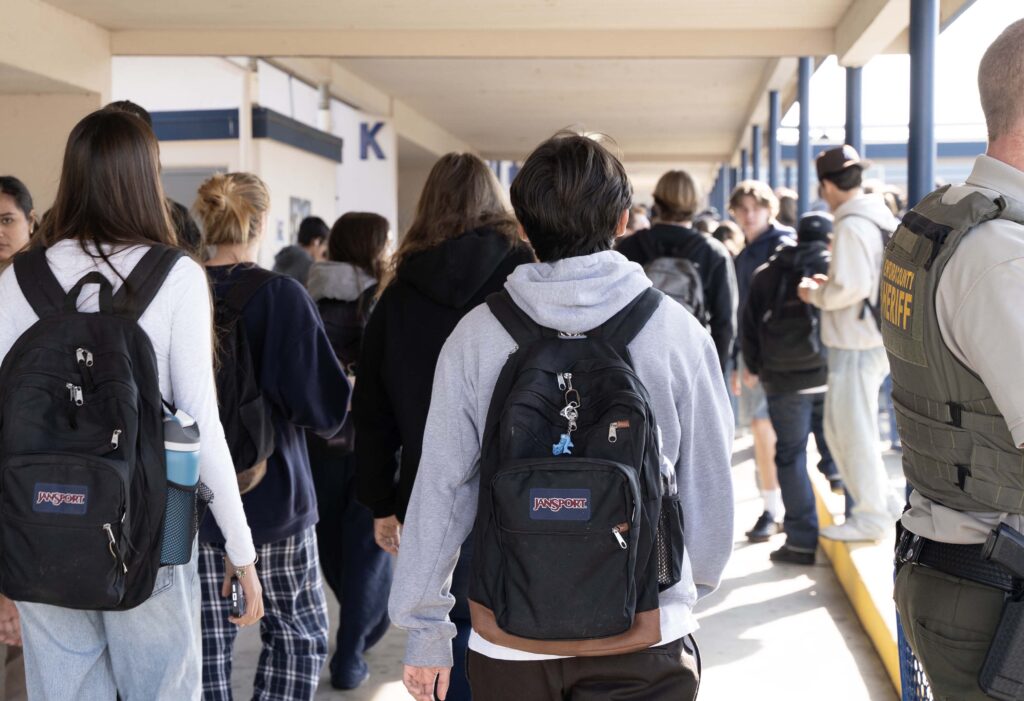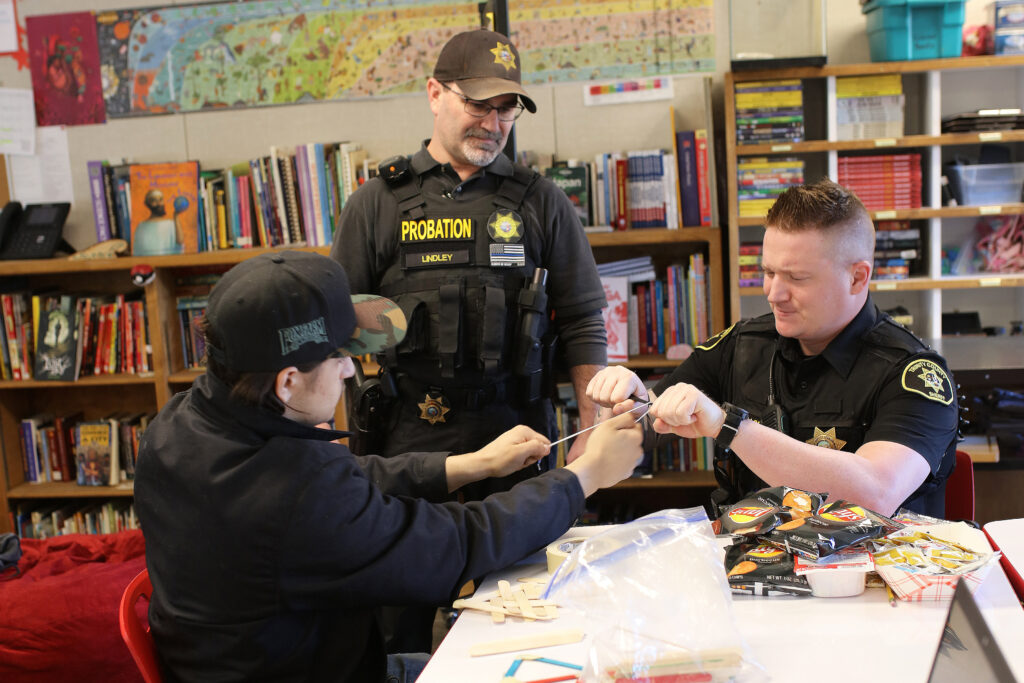
Students walk to class during passing periods at Pacifica High School, which is part of the Oxnard Union High School District.
Credit: J. Marie / EdSource
Last year, a Washington Post investigation identified more than 200 school police officers across the country “who were charged with crimes involving child sexual abuse from 2005 through 2022.”
There are at least two ongoing court cases involving allegations of sexual misconduct against former school resource officers in California.
James Louis, who worked as a resource officer at Rodriguez High School in Solano County, was arrested on March 8, 2024, after parents told police that he had texted sexual images and messages to two students.
Solano County prosecutors charged Louis with “sending, distributing, or exhibiting harmful or obscene material to a minor,” court records show. Louis is free on bail. His attorney declined to comment. The Fairfield Police Department, which had employed Louis and assigned him to the high school, would not say whether he resigned or was fired after his arrest.
In Orange County, former deputy sheriff and resource officer Justin Raymond Ramirez pleaded guilty in 2023 to misdemeanor charges that he showed students at Trabuco Hills High School a video of a couple having sex that ended with a woman’s violent death. One of the students and her family are now suing Ramirez, the county, and the county sheriff for extreme emotional distress.
The state Peace Officer Standards and Training Commission stripped Ramirez’s policing certification last year, a move that permanently bans him from working as a law enforcement officer in California.
After Ramirez’s arrest, Orange County District Attorney Todd Spitzer issued a statement saying, “School resource officers are in our children’s schools to ensure a safe learning environment and help build trust between law enforcement and our community. Ramirez had no business being in a position of trust around children, and he abused that position of trust in a truly disgusting way.”
The county and Sheriff Dan Barnes are also defendants in the lawsuit. Neither responded to requests for comment, and attempts to reach Ramirez were unsuccessful. Court records show he does not have an attorney for the civil case.
In December, after the Washington Post published its investigation, the U.S. Justice Department revised its recommendations for school resource officer programs and called for schools and law enforcement agencies to “develop clear policies and procedures about interpersonal contacts” between resource officers and students, including about touching, social media contacts, emails, cards and after-school interactions.
The Justice Department also recommends that “officers should take extra precautions to avoid any appearance of impropriety.”
A spokesperson for the National Association of School Resource Officers, which provides training for law enforcement, said that it is updating its recommendations to reflect the Justice Department’s recommendations.



